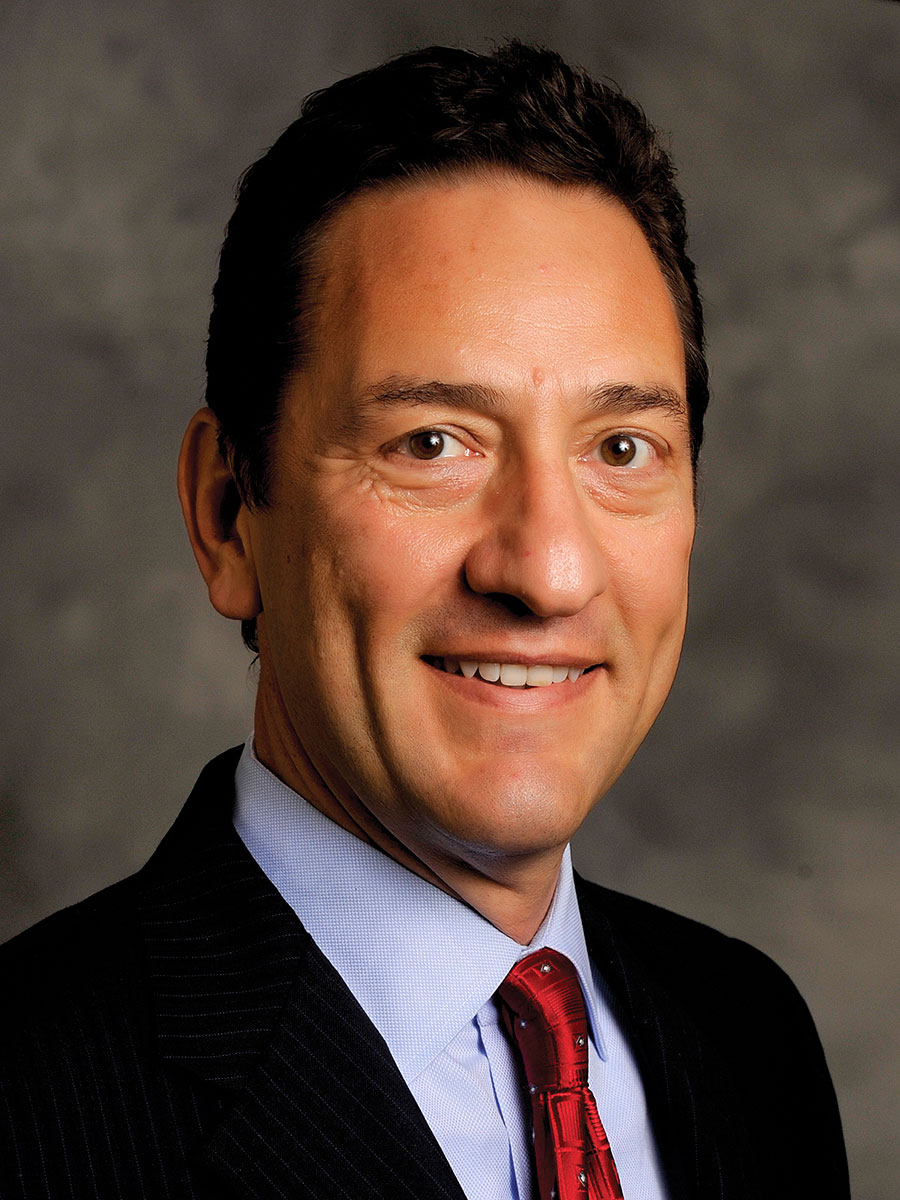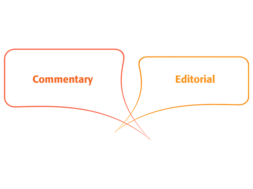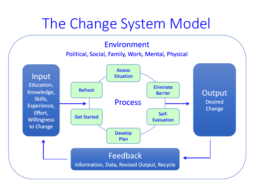
2015 Proprietary Higher Education Overview: “There must be a pony in here somewhere!”
By Tony Guida, Partner, Duane Morris LLP
2015 was a chaotic year for the proprietary higher education sector. And it wasn’t pretty. An increase in announced federal and state investigations and sanctions, the messy closure of Corinthian Colleges, widespread campus closures, and declining enrollments have all served to cast the sector in a negative light and raise questions about the sustainability of the for-profit college sector.
What seems like mostly doom and gloom over the last 12 months has also set the table for events that will occur in 2016. While the landscape of the sector markedly changed in 2015, it has created a window of opportunity for schools that can navigate through what at first blush looks to be the dawn of another challenging year.
As we bid good riddance to 2015, lets first take a closer look at the events that defined the year.
“I’ve got a pen and I’ve got a phone”
In 2015, the President moved forward with large-scale higher education executive actions outside the legislative process.
The Department of Education’s (ED) final “Gainful Employment” (GE) Rule became effective in July. Two sector lawsuits seeking to invalidate it were unsuccessful, with a decision pending on one of those appeals expected in 2016 (the other decision was not appealed). The GE data reporting process has been less than smooth and sometimes frenetic, with the initial draft debt to earnings rates expected later this year.
ED also released its new “College Scorecard,” which was substantially watered down due to significant push back from traditional colleges and universities. It is noteworthy that ED’s announcement of the Scorecard seemed to go out of its way to highlight proprietary schools as examples of poorly performing schools. The overall effort was met with tepid to poor reviews by all sectors of higher education.
ED also held public hearings regarding its planned 2016 “defense to repayment” negotiated rulemaking, with the first set of negotiations occurring this month.
This rule could make it easier for students to obtain loan discharges for alleged misconduct by institutions and could require the institutions to reimburse ED for any discharged loans.
Finally, the President announced a $400 million FAFSA plan that is projected to result in 50,000 more higher education enrollments next year.
The rise of coordinated enforcement activities
In 2015, ED retreated from statements in years past acknowledging that “good actors” actually exist in the sector. This was replaced by a substantial uptick in public and not so public investigations and sanctions by a myriad of federal and state agencies directed at virtually all parts of the sector.
The Interagency Task Force between ED and other federal and state agencies first announced in October 2014 was firing on all cylinders. During 2015, the Consumer Financial Protection Bureau (CFPB) and the Federal Trade Commission (FTC) each launched new investigations into a number of institutions. The Securities and Exchange Commission (SEC) announced fraud charges against one publicly traded company and two of its officers. And the Department of Defense (DoD) took action against the University of Phoenix related to its tuition assistance program. Communications from ED to schools on enforcement matters now routinely copy other federal and state agencies participating in the task force. We can expect this high level of coordination to continue.
There also was a notable increase in investigations by the Department of Justice (DOJ) related to the False Claim Act lawsuits against several for-profit schools. While the DOJ has historically declined to intervene in such suits, that seems to have changed and interventions occurred in a handful of cases. State Attorneys General, most notably California and Massachusetts, also commenced several new investigations into proprietary schools.
ED also stepped up its own enforcement activities. Several publicly traded companies have announced requests by ED for information including advertising and marketing materials and disclosures provided to prospective students. These requests are similar to those received by Corinthian Colleges and other institutions in prior years. Imposition by ED on schools of provisional certifications and the Heightened Cash Monitoring 2 (HCM2) method of payment during open and ongoing program reviews (even without noted negative findings) have become an increasingly common occurrence, as reflected in an increase in the number of proprietary schools placed on HCM2 during 2015.
Fight or retreat?
Due to the time, costs, uncertainty and ongoing reputational risks of fighting back, most companies eventually settle government charges against them. Further complicating the decision, the threat of losing access to federal funding during the dispute often makes it nearly impossible to engage in a sustained fight even when the claims have no merit.
A number of settlements were announced in 2015, with the most noteworthy being the two record setting settlements announced by Education Management Corporation (EDMC) in November. The first settled four qui tam cases for $95 million, including an incentive compensation case in which the DOJ and five state Attorneys General had intervened. The second was a consent judgment with 39 States and the District of Columbia to resolve a multistate investigation into EDMC’s recruiting practices. In addition to agreeing to forgive $102 million in institutional student loans, EDMC agreed to a monitor and dozens of pages of conduct provisions.
It is expected that EDMC’s consent judgments will serve as a template that Attorneys General attempt to use to set industry standards throughout the sector.
In fact, the consent judgments provide that EDMC is not obligated to abide by proposed best practices concerning lead aggregators unless at least 50 percent of the sector also agrees to those provisions. Sign-ups will begin in 2016!
The Center for Excellence in Higher Education (CEHE), which owns Stevens-Henager College and CollegeAmerica, demonstrated that good things can happen when a wrongly accused company does fight back. The Colorado Attorney General’s 2-1/2 year investigation culminated with a 34-page complaint and a motion for injunctive relief seeking 21 preliminary injunctions. After a five-day hearing, the judge denied, in its entirety, the Colorado Attorney General’s motion for injunctive relief. Significantly, the judge expressly found that CEHE’s recruitment process was transparent and contained the appropriate level of student safeguards and that the information provided to students and prospective students concerning institutional loans were neither false nor misleading.
“Dog days” for accreditors
2015 also saw a substantial increase in attacks on accreditation agencies, with everyone from the Wall Street Journal (article entitled “The Watchdogs of College Education Rarely Bite”), presidential candidate Marco Rubio (referring to accreditors as a “cartel”), Senator Elizabeth Warren (engaging in a heated exchange with Dr. Albert Gray from ACICS at a Senate HELP Committee Hearing), and Education Secretary Duncan (referring to accreditors as “the watchdogs that don’t bark”) taking shots at accreditors. Even the CFPB, whose self-stated core function is to ensure consumers have the information they need to understand the terms of their agreements with financial companies, piled on with an investigation into ACICS’s accreditation of several for profit colleges.
And this past fall, in what some dubbed an effort to shame accreditors to focus more on student outcomes when reviewing colleges, ED issued an executive order, new rules, and recommendations to Congress for more sweeping changes regarding accreditation. This “Transparency Agenda for Accreditation” published each accreditor’s standards for evaluating student outcomes and student and institutional metrics for the colleges they accredit. Most notable of ED’s legislative reform proposals was a request to repeal the statutory prohibition on ED’s ability to set and enforce student achievement standards in accreditation recognition.
The Corinthian ripple effect
The forced wind down of Corinthian Colleges sent a shudder through the sector. A nearly $30 million fine sought to be imposed on Corinthian in early 2015 for alleged false placement disclosures at Corinthian’s Heald College campuses dashed any hopes of selling that institution, forcing the bankruptcy of Corinthian before those claims could be heard.
The fallout has been tremendous, with a recital of the impact of Corinthian’s collapse on the U.S. Treasury and students becoming a tagline for just about any news story written about the sector. In fact, the Corinthian debacle has become so ubiquitous in media stories about the sector that it caught the attention of the writers of the CBS drama “The Good Wife,” where it became part of the storyline for an episode in November entitled “Payback.”
Sector contraction and continued tough market conditions
2015 saw a dramatic reshaping of the proprietary sector landscape. Other schools such as Westwood Colleges and Jones International University announced they were closing, and a number of smaller schools quietly disappeared. Many companies voluntarily shed schools to either narrow their target audiences or focus their efforts and brand identity on their better performing schools. More public examples include Career Education Corporation shuttering its Le Cordon Bleu, Sanford Brown and other technical schools, Kaplan selling its 38 Kaplan College campuses, Lincoln Education Services selling off its healthcare and other professional schools (i.e., culinary arts and cosmetology), DeVry closing 14 of its campuses, Education Management closing 15 Art Institutes, and Bridgepoint Education’s Ashford University closing its sole on ground campus in Iowa.
Buildup to the “Big Show”
2015 saw the introduction of both partisan and bipartisan legislation as a build up to HEA authorization. Topics included: affordability and college costs; access, persistence and completion; better information for consumers; student loan program simplification; accreditation and oversight; innovation; and easing the burden of federal regulations. Noteworthy were new legislative proposals by sector detractors seeking to impose personal and civil liabilities and debarment on executives for misleading students and losses incurred by ED.
Here is hoping for a better 2016
By all accounts, President Obama will use his final year in office for a full court press on his agenda using his executive powers. And early indications are that Arne Duncan’s replacement, former New York State Education Commissioner John King, will continue to push forward existing ED initiatives during 2016.
At the top of the 2016 list has to be ED’s negotiated rulemaking that begins this month to determine defenses to re-payment of student loans and consider revisions to existing financial responsibility and administrative capability regulations to give ED more discretion to act when faced with other “risk factors,” such as pending lawsuits and investigations.
The agreed upon criteria for discharge and the rules for repayment by institutions of discharged loans will be critical to the sector. In many ways, this rulemaking may pose more of an existential threat to the sector, and disruption to all of higher education, than does the GE rule.
Don’t expect the increase in federal activism (including through Interagency Task Force) to end any time soon.
The effort to overturn or temper the GE rule is not over. The Court of Appeals decision on APSCU’s case will likely be rendered this year. Many Congressional Republicans still support blocking several of ED’s most onerous regulations, including the GE rule, and their opposition to federal micromanagement is supported by most of higher education. This is not likely to occur legislatively outside of HEA reauthorization, however, but may occur this fall as part of the budget/appropriations process as funding for the current fiscal year 2017 ends Sept. 30. Speaker Ryan has indicated a commitment to moving appropriations bills through regular order, which would allow more up and down votes on amendments rather than delaying until the end of the year horse-trading on key riders in an omnibus spending bill. Time will tell. Also, the presidential election outcome may change the dynamics in the coming year’s appropriations process if finalization of a Fiscal Year 2017 education appropriations bill slips past Election Day.
With the reauthorization of the Elementary and Secondary Education Act complete, Congress can now turn its attention to the HEA. There is a chance (think the famous line of Jim Carrey’s character in the movie “Dumb & Dumber”) that Congress may introduce an HEA reauthorization bill by year’s end. Look for a ramp up in Congressional hearings and the continued introduction of some bipartisan but mostly partisan bills as Members of Congress publicly stake out their HEA reauthorization positions.
Finally, 2016 is an election year – and higher education and especially excessive student debt are election issues. It would not be surprising if the Democratic nominee targets for-profit college education as a campaign issue as part of framing the need for addressing student debt. It goes without saying that who is elected President and the balance of power in Congress will have a significant impact on the fate of the sector over the next two to four years.
“Survival of the fittest”
Because higher education is so highly regulated, public policy, law and regulations, politics and the proprietary college business models are inextricably linked. As 2015 showed us, federal and state governments and the rules they promulgate can in many ways pre-determine the destinies of schools in the sector.
Those institutions that can incorporate the “new normal” into their business model will be best positioned to survive and succeed.
The sector continues to have many of the same underlying growth drivers that are responsible for its prior successes.
There will continue to be demand for skills-based employer-driven education. An innovative market approach with good student outcomes and sound business practices is synergistic with sound higher education policy. Those who lean into this new reality and can live at this intersection successfully will be well positioned for long term success.
“Look for the pony”
President Ronald Reagan liked to tell a version of the story about a very optimistic young boy who, when given a large pile of horse manure as a gift, screamed with delight, jumped on top of the pile, and began digging with his bare hands. When asked what he was doing, the boy replied: “With all this manure, there must be a pony in here somewhere!”
For optimists like me, 2016 looks to be a much better year. Just be sure not to stand downwind from 2015.

Tony Guida , is a Partner with the Education Group of Duane Morris LLP, a 700+ attorney law firm with 27 offices in major markets around the world. He and Duane Morris serve all sectors of postsecondary education and the businesses that support postsecondary education, providing deep experience and guidance in all legal aspects of this complex industry, as well as strategy, operations, finance and policy. Tony focuses his practice on issues relating to federal and state higher education law, licensing and accreditation, mergers, acquisitions and other substantive changes; government response and crisis management, federal and state higher education policy; and government affairs.
Tony has previously served in senior executive positions with two major publicly traded companies that owned and operated colleges and universities on multiple platforms. As a member of the senior executive team reporting to the CEO, Tony led functional areas that included regulatory affairs and compliance, government relations and public affairs, policy, public relations and internal communications, and strategic development (including acquisitions, divestitures, and greenfield campus development). He has also served as CFO and general counsel for a large proprietary culinary school. Prior to joining the higher education industry more than 15 years ago, Tony was a partner in the litigation section of a large regional law firm.
Tony currently serves on the Board of Trustees of a private non-profit university. He previously served on the Board of Directors of the Association of Private Sector Colleges and Universities, a national trade association representing proprietary institutions, chairing its Fedreal Legislative Committee for a number of years. He also served on the Advisory Committee on Student Financial Assistance, which was created by Congress to serve as an independent source of advice and counsel to Congress and the Secretary of Education on student financial aid policy.
Tony is a frequent speaker at symposia and conferences on issues relating to regulatory compliance, government enforecment actions, higher education mergers, acquisitions, and other transactions and substantive changes, licensing and accreditation, and federal and state higher education policy.
Tony resides with his wife Carol and their family in San Juan Capistrano, Calif.
Contact Information: Tony Guida // Partner // Duane Morris LLP // 619-744-2256 // TGuida@duanemorris.com // www.duanemorris.com








Comment(1)